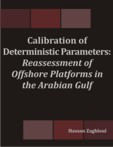Add abstract
Want to add your dissertation abstract to this database? It only takes a minute!
Search abstract
Search for abstracts by subject, author or institution
Want to add your dissertation abstract to this database? It only takes a minute!
Search for abstracts by subject, author or institution
by Josh Sanderson
| Institution: | Wright State University |
|---|---|
| Department: | Electrical Engineering |
| Degree: | MSEgr |
| Year: | 2014 |
| Keywords: | Electrical Engineering; electrical engineering |
| Posted: | |
| Record ID: | 2044516 |
| Full text PDF: | http://rave.ohiolink.edu/etdc/view?acc_num=wright1410872323 |
Modulation detection is important to many communication applications. Much research has been done in this area for radio frequency (RF) signals, but until recently little has carried over to the underwater communication world. Traditional methods include the use of fourth order cumulants or second order cyclostationary features to determine the modulation scheme being used. Many of these methods fail due to the complex and varying nature of the underwater channel. This thesis proposes a new form of hierarchy modulation detection for underwater acoustic communication signals using maximum likelihood combining. The proposed method for hierarchical modulation detection for this research is a two-step process. The first step uses cyclostationary features which are insensitive to the many of the effects of the underwater channel and will provide a useful way to classify between BPSK and higher order modulation schemes. The next step will use maximum likelihood combining to determine whether the non-BPSK signals are QPSK or 16QAM. The use of noncontiguous block spacing can also help improve the probability of correct detection. Two methods were implemented and tested to find the correct modulation, averaging and voting. For averaging, the mean of multiple blocks were combined and a decision made on the result. For voting, a decision was made for each block, and the majority decision was chosen. Using underwater acoustic communication data, a high degree of accuracy is achieved for modulation detection of BPSK, QPSK, and 16QAM signals. The best result occurred for the averaging method combining three noncontiguous blocks, where the correct modulation was detected to be 94:23 for BPSK, 91:54 for QPSK and 90:77 for 16QAM. The proposed method overcomes the effects of the underwater channel with a high probability of correct detection using real captured sea data.
Want to add your dissertation abstract to this database? It only takes a minute!
Search for abstracts by subject, author or institution


|
Predicting the Admission Decision of a Participant...
|

|
Development of New Models Using Machine Learning M...
|

|
The Adaptation Process of a Resettled Community to...
A Study of the Nubian Experience in Egypt
|

|
Development of an Artificial Intelligence System f...
|

|
Theoretical and Experimental Analysis of Dissipati...
|

|
Optical Fiber Sensors for Residential Environments
|

|
Calibration of Deterministic Parameters
Reassessment of Offshore Platforms in the Arabian ...
|

|
How Passion Relates to Performance
A Study of Consultant Civil Engineers
|